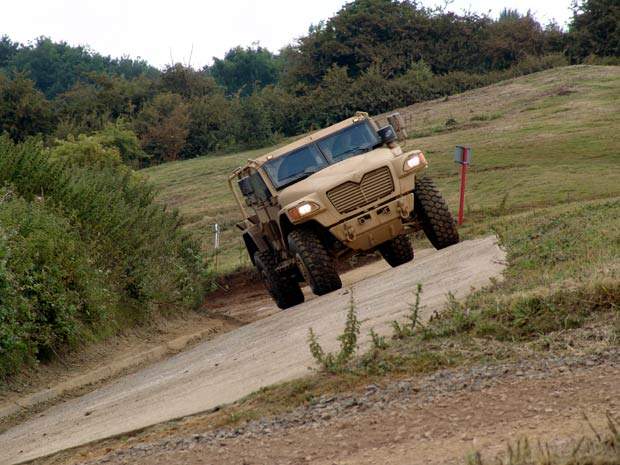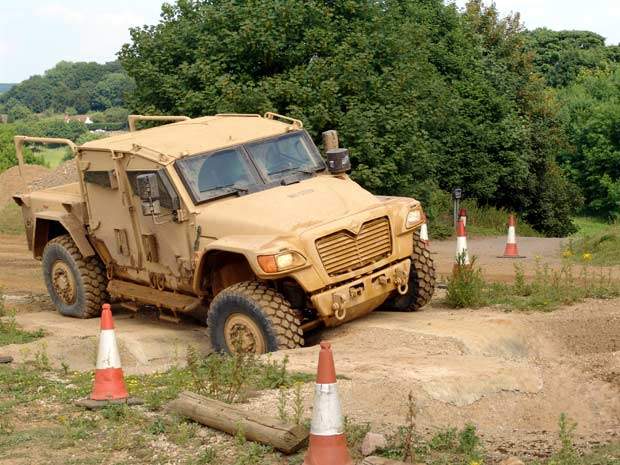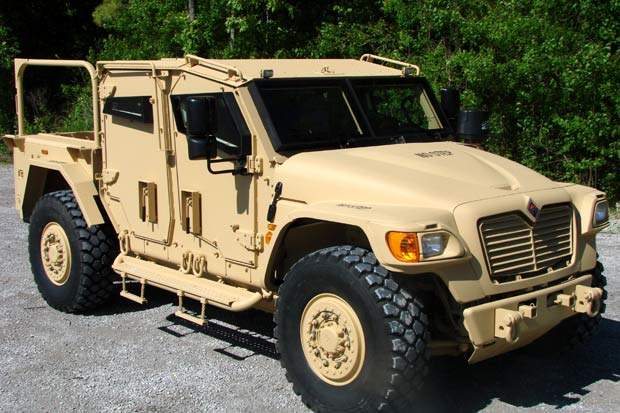
The Husky medium-armoured high-mobility tactical support vehicle
Manufactured by Navistar Defence, the Husky is a medium-armoured high-mobility tactical support vehicle (TSV) based on the International MXT model. The vehicle has been designed specifically for the British Army as part of a $180m contract.
The British Army’s fleet of tactical support vehicles includes Wolfhound, Coyote and Husky. The vehicles are also used for transporting supplies. Husky will support light armoured vehicles, while Wolfhound and Coyote will support heavy and light armoured vehicles respectively.
Under the contract with the British Army, Navistar will supply 262 Husky vehicles to the TSV fleet for deployment in Afghanistan. The first Husky made its debut on 24 June 2009 at the UK MoD vehicle show, known as DVD.
The Husky is part of the operational utility vehicle systems (OUVS) programme launched in 2003. Under the OUVS programme, the UK Ministry of Defence will procure armoured vehicles to replace its RB44, Pinzgauer and Land Rover capabilities.
In September 2010, the UK MoD placed an additional order for 89 MXT Husky vehicles. This was a follow-on to a contract for 262 MXT Husky units awarded in April 2009. Deliveries were completed by early 2011.
Utility, ambulance and command post variants
Husky has been designed to aid patrols in areas deemed to be of a lower threat. It is produced in three variants – utility vehicle, ambulance and command post vehicle.
The utility variant is equipped with a flat bed, while the command and ambulance variations have enclosed cabs at the rear. An ambulance developed with enhanced protection entered service in 2010 along with the command post vehicle.
Platform design for Navistar’s Husky vehicle
The Husky is a four-wheel drive medium platform TSV designed to exhibit mobility and strength. The vehicle is 6.4m long, 2.5m tall and 2.4m wide and weighs 15,300lb. It can accommodate four people, including the driver and a commander.
Armament and self-protection of the TSV
The vehicle features a mounted general-purpose machine gun and remote controlled weapons system with door and glass firing ports. The weapons included in the weapon system have a calibre of up to 12.7mm.
Husky’s strong frame is capable of being up-armoured while retaining its manoeuvrability, hauling and braking capacities. The armour has been designed by Plasan Sasa and has two removable armour kits, A-kit and B-kit.
Engine and mobility of the UK Army’s Husky
The Husky is powered by MaxxForce D6.0L V8. It provides 340hp (254kW) and can be driven at a maximum speed of 70mph. Any Nato single-fuel derivative can be used to fuel the engine.
The Husky is fitted with Hutchinson wheels with a bead lock retention system and Michelin 395/85R20 radial tyres with a Dana central tyre inflation system.
The vehicle operates in the theatre which is not approachable by heavier vehicles and can carry higher payloads than light vehicles.
OUVS programme details
As part of the OUVS programme, Navistar vehicles were selected in October 2008 to replace part of the UK’s light tactical wheeled vehicle fleet. Navistar is competing with eight other finalists.
After being tested in 2009, Navistar’s vehicles, basically designed on the International MXT model, will replace Land Rover, Wolf, Reynolds Boughton RB-44 and Pinzgauer vehicles.
The programme was launched by the UK Ministry of Defence in 2003.
In addition to MRAP vehicles and TSVs, Warrenville, Illinois-headquartered Navistar Defence manufactures heavy-haul armoured vehicles and future tactical truck system demonstrator vehicles (FTTS).
International MXT model
The International MXT is a rugged lightweight vehicle meant for border patrol, reconnaissance missions and security details. It measures 252in, 91in and 96in in length, height and width. The model is powered by the MaxxForce D/VT-365 V8 engine and is suitable to accommodate five passengers. The vehicle can be armoured with a complete range of ballistic IED and mine-blast protection solutions, integral and A-kit / B-kit configurations and 360° degree crew protection.






